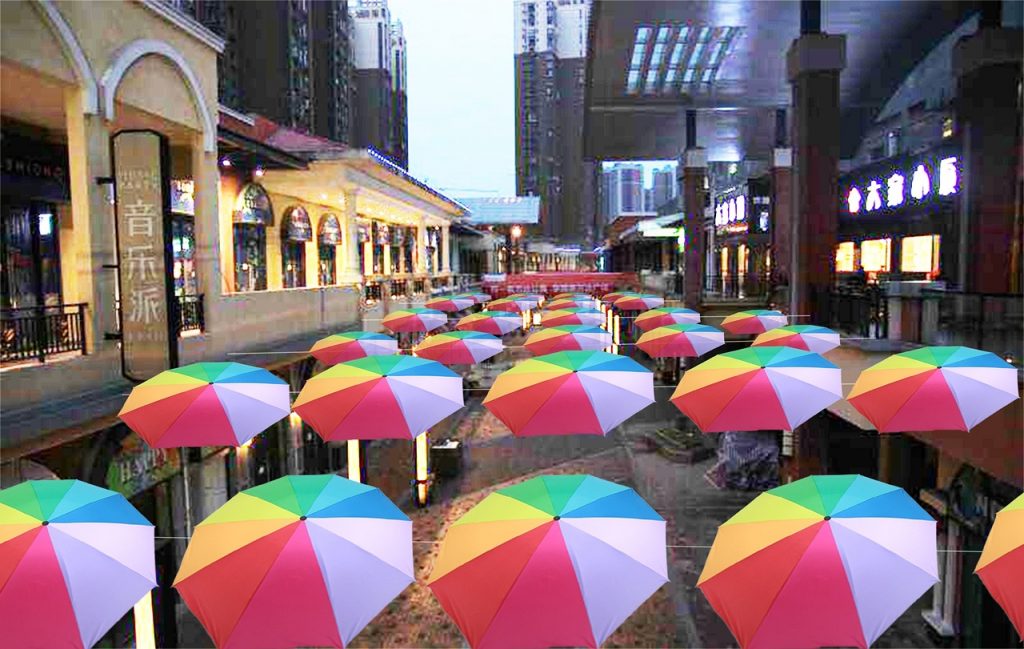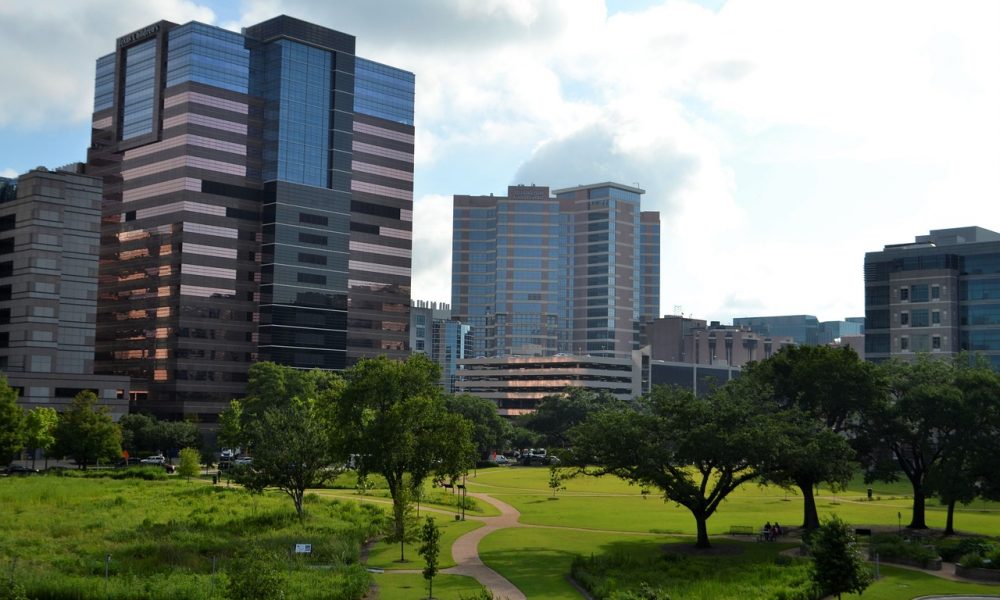Creating a visually appealing and functional outdoor space is a critical component of modern-day commercial landscaping. Beyond just enhancing aesthetic appeal, designing a beautiful outdoor space is an excellent way of attracting customers and providing a welcoming atmosphere for visitors. Here are some tips for designing an outdoor space that is both functional and stunning.
- Choose the right plants. Ensure that the plants you select are suitable for the climate and sunlight conditions. Incorporate a mix of trees, shrubs, and flowers to create a visually appealing landscape.
- Maximize space. Consider incorporating seating areas, walkways, and designated areas for events or gatherings. Maximizing the use of space will allow the outdoor area to be utilized to its fullest potential.
- Use lighting. Strategic use of lighting can create a welcoming ambiance and highlight the beauty of the landscaping. Consider accent lighting, pathway lights, and spotlights to create a stunning outdoor space.
- Use efficient irrigation systems. To maintain the beauty of the landscape, an efficient irrigation system is essential. Choosing the right system and incorporating proper drainage will help ensure the longevity of the landscape.
- Regular maintenance and upkeep. Consistent maintenance is necessary to ensure the landscape remains beautiful and functional. Hiring a professional landscaping company to provide regular maintenance services such as pruning, fertilizing, and weed control is a great start.
- Consider sustainability. Minimize water usage by incorporating native plants and trees. Also, consider environmentally friendly practices such as composting and organic pest control for a more sustainable outdoor space.
- Budget planning. Creating a beautiful outdoor space requires careful budgeting and planning. Consider working with a professional commercial landscaper to design and implement the project.
- Accessibility and compliance. Incorporating accessibility and ADA compliance is crucial during the design phase, ensuring that walkways, seating areas, and other features are accessible to all, including people with disabilities.
- Permitting and Zoning. Compliance with zoning regulations and obtaining the necessary permits before embarking on any commercial landscaping project will save you from fines and penalties.
Choosing the Right Plants

Commercial landscaping is not just about creating a beautiful and attractive outdoor space, but it also plays an important role in attracting customers to businesses. Choosing the right plants is crucial to achieving this goal. Before selecting plants, consider the climate and sunlight conditions, as well as the size and shape of the outdoor area. Incorporating a mix of trees, shrubs, and flowers will create a visually appealing landscape.
Native or adapted plants are an excellent choice for commercial landscaping as they require less water and maintenance. Trees can provide shade and reduce the air conditioning bill, making them a cost-effective addition to the landscape. Shrubs can create borders or screens while flowers can add color and fragrance. Consider selecting plants that have different blooming periods to ensure that the landscape looks good throughout the year.
- Choose plants that suit the soil type and quality
- Consider how much maintenance is required
- Choose plants that are appropriate for the local climate conditions
Overall, when choosing the right plants, keep in mind that they should not only complement the overall design of the landscape but also serve a functional purpose. A professional commercial landscaper can assist in selecting appropriate plants that fit the area’s size and shape, improving your space’s overall appeal and functionality.
Maximizing the Use of Space
When designing a commercial outdoor space, it’s important to maximize its potential and make it functional as well as beautiful. One way to achieve this is by adding seating areas, walkways, and designated spaces for events or gatherings. By doing this, you can maximize the use of space and ensure the area serves its purpose.
Seating areas can be created with benches, chairs, or even outdoor furniture, providing customers or visitors with a comfortable place to relax and enjoy the surroundings. Walkways can be added to guide visitors through the landscape, creating a flow to the space. Designated areas for events or gatherings can be used for outdoor concerts, dining areas, or even fitness classes.
By maximizing the use of space, you can create an outdoor area that not only looks beautiful but also functions efficiently. Keep in mind that space should be utilized based on its purpose and prioritize high-traffic areas. Working with a professional commercial landscaper can help you make the most of your outdoor space and create a welcoming atmosphere for your customers or visitors.
Using Outdoor Lighting
Outdoor lighting is an essential element in creating a welcoming ambiance and highlighting the beauty of the landscape. Properly placed lighting can add drama and depth to the outdoor space by accentuating specific plants, trees, or architectural elements. Consider using a mix of accent lighting, pathway lights, and spotlights to create a stunning outdoor space.
- Accent lighting can be used to highlight specific features of the landscape, such as a unique tree or a water feature.
- Pathway lights can be used to guide visitors through the outdoor space and highlight the walking paths.
- Spotlights can be used to add drama to the landscape by lighting up specific areas, such as a statue or a building façade.
When choosing outdoor lighting, it is important to consider the overall design of the area and what effect you want to achieve. Work with a professional commercial landscaper who can help you design a lighting scheme that suits your specific outdoor space.
Efficient Irrigation Systems
An efficient irrigation system is a crucial component in keeping the commercial landscape beautiful and healthy. There are several irrigation systems to choose from, including drip, sprinkler, and rotary systems. It is important to choose the right system based on the landscape’s size, shape, and water requirements. A professional commercial landscaper can help determine the irrigation system that best suits the landscape’s needs.
Incorporating proper drainage is equally important to ensure the irrigation system works efficiently and the landscape remains healthy. Poor drainage can result in waterlogging, which can damage the plants’ roots and cause them to die. A proper drainage system will prevent waterlogging and promote healthy plant growth. Consider installing drainage pipes and incorporating permeable surfaces like gravel and stones for better drainage.
Maintenance and Upkeep

Maintenance and upkeep are crucial for maintaining the beauty and functionality of commercial landscapes. Regular pruning, fertilizing, and weed control are necessary to ensure that the plants and shrubs remain healthy and vibrant. By hiring a commercial landscaping company, you can ensure that your outdoor space receives the necessary care it needs to thrive.
Additionally, a landscaping company can help identify potential issues before they become problems. They can provide helpful tips and advice on how to maintain your outdoor space, such as when to water and how to protect your plants from pests and diseases.
To ensure your landscape remains beautiful and functional, consider setting up a maintenance schedule with your landscaping company. This schedule can include routine upkeep, such as pruning, fertilizing, and weed control, as well as seasonal maintenance, such as fall leaf removal and winter snow removal.
- Regular pruning, fertilizing, and weed control are necessary to maintain the beauty and functionality of the landscape.
- Hiring a commercial landscaping company can ensure that your outdoor space receives the necessary care it needs to thrive.
- Set up a maintenance schedule with your landscaping company to ensure routine and seasonal maintenance is performed.
Environmental Sustainability
Environmental sustainability is a crucial consideration when designing and maintaining commercial landscaping. By incorporating native plants and trees, you can help preserve the natural ecology of the area and provide habitat for local wildlife. Native plants also require less water, fertilizer, and maintenance, making them a more sustainable choice.
Minimizing water usage is another important aspect of environmental sustainability. Choosing drought-resistant plants and implementing efficient irrigation systems, such as drip irrigation, can help reduce water waste. Additionally, consider using rainwater harvesting techniques to supplement irrigation needs.
Composting and organic pest control are also effective environmentally friendly practices that can be implemented in commercial landscaping. Composting yard waste and organic matter can help reduce landfill waste and provide nutrient-rich soil for plants. Using organic pest control methods, such as insect-trapping plants and beneficial insects, can reduce the need for harmful pesticides.
By incorporating these sustainable practices in commercial landscaping, businesses can not only create a beautiful outdoor space but also contribute to the preservation of the environment.
Budgeting and Planning
Creating an outdoor space that is both visually appealing and functional requires careful budgeting and planning. The first step is setting a budget and determining the areas that need to be landscaped. Prioritizing the landscaping areas can help allocate funds effectively and ensure that the most important areas are addressed first.
Consider working with a professional commercial landscaper to design and implement the project. A professional landscaper can provide valuable insights and expertise, ensuring that the outdoor space is designed according to your vision and within your budget. Additionally, they can help with selecting the right plant species, irrigation systems, and lighting to enhance the natural beauty of the outdoor area.
Remember to keep in mind long-term maintenance and upkeep costs when budgeting for the project. It’s essential to not only create a beautiful space but also maintain its beauty for years to come. Consider regular trimming, fertilizing, and weed control to keep the landscaping pristine.
Accessibility and ADA Compliance
Creating an outdoor space that is accessible to all, including those with disabilities, is essential in commercial landscaping design. Incorporating accessibility and ADA compliance features should be a priority in the planning and implementation of the project. The walkways, entry points, seating areas, and other outdoor features should be designed with the guidelines set forth by the Americans with Disabilities Act (ADA). This will ensure that there are no obstacles and hazards for individuals with mobility impairments, visual and hearing impairments, and other disabilities. It is important to consider the slope, width, and slip-resistance of the walkways, the height, and location of the seating areas, and the clearance space around outdoor features. By incorporating accessibility and ADA compliance into the design of the outdoor space, businesses can create a welcoming environment that is inclusive to all.
Permitting and Zoning
When starting a commercial landscaping project, it is important to obtain all necessary permits and comply with zoning regulations. Failure to do so can result in costly delays, fines, or other penalties. Prior to starting the project, research what permits are required and what zoning regulations are in place. This can vary depending on the location and scope of the project.
Working with a professional commercial landscaper can help ensure that all necessary permits are obtained and all zoning regulations are followed. They will have a thorough understanding of local regulations and can help guide the project in the right direction. By complying with permitting and zoning, the project can stay on track and avoid any legal issues in the future.

Leave a Reply